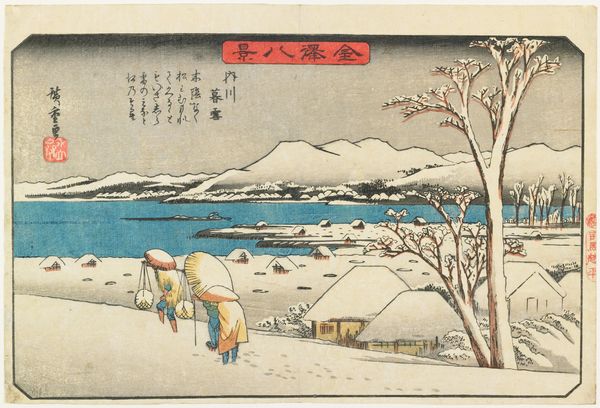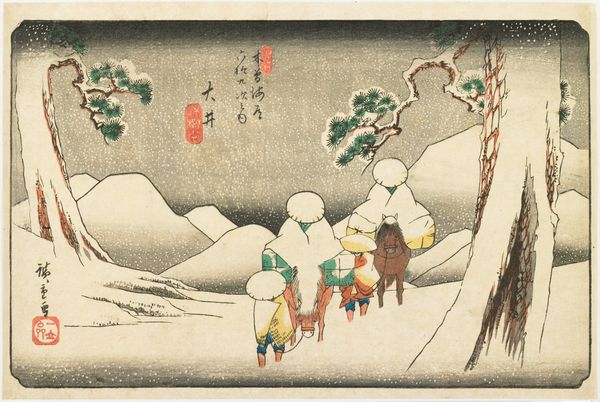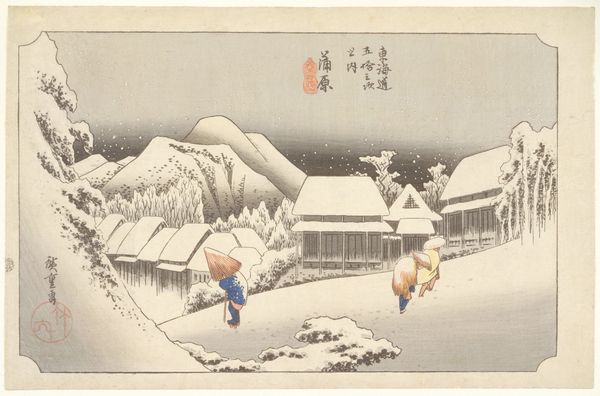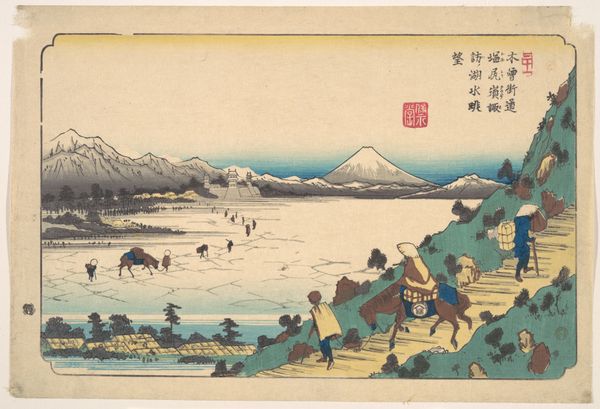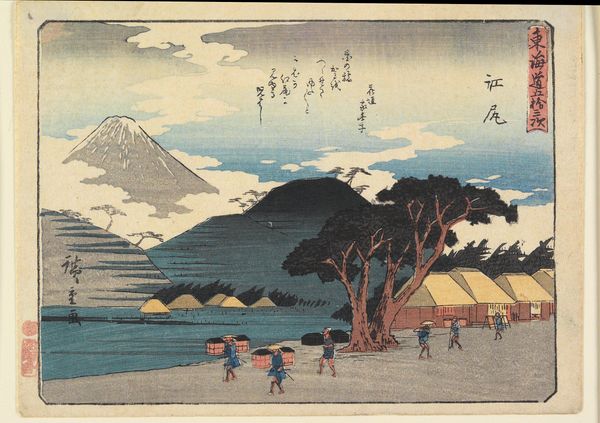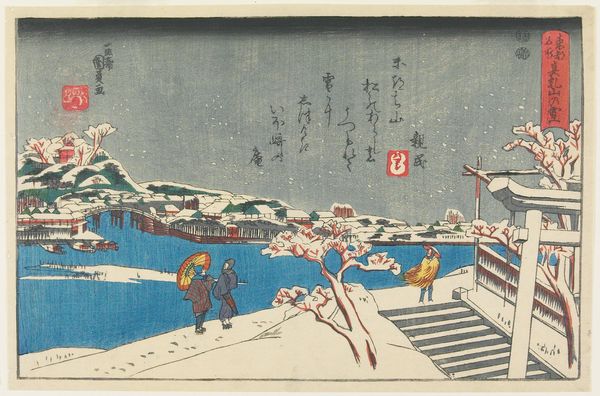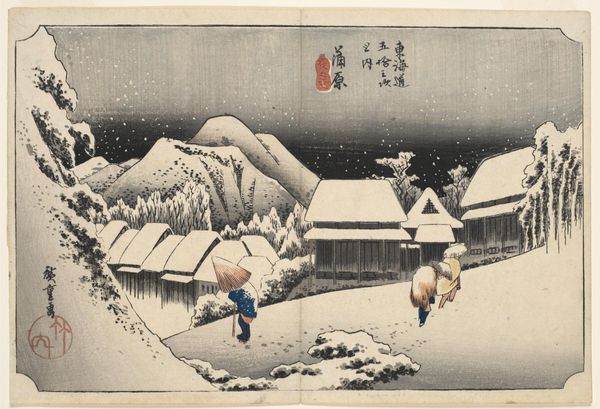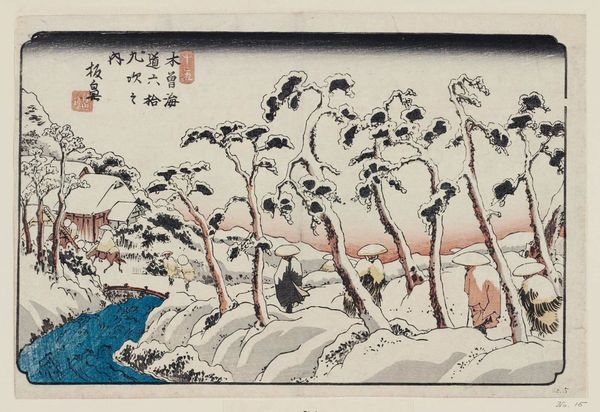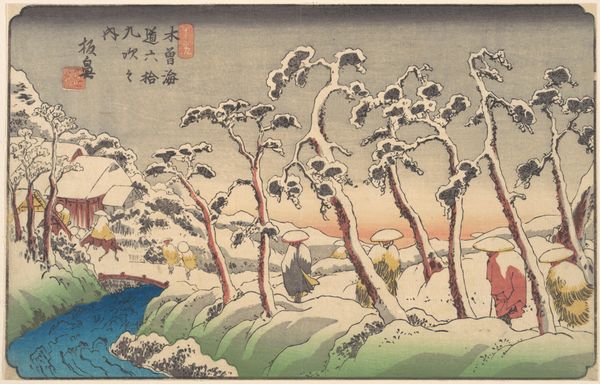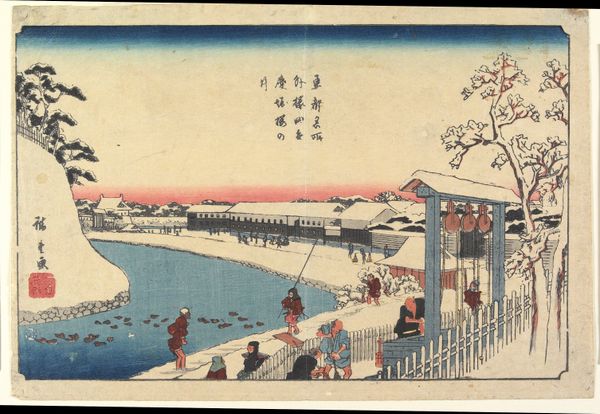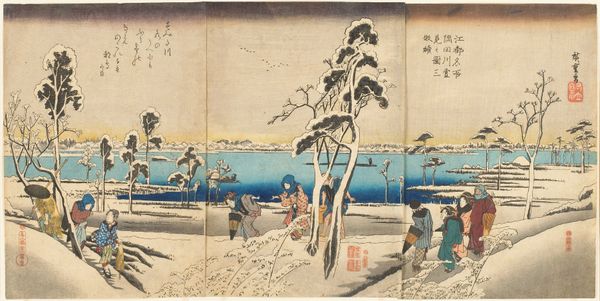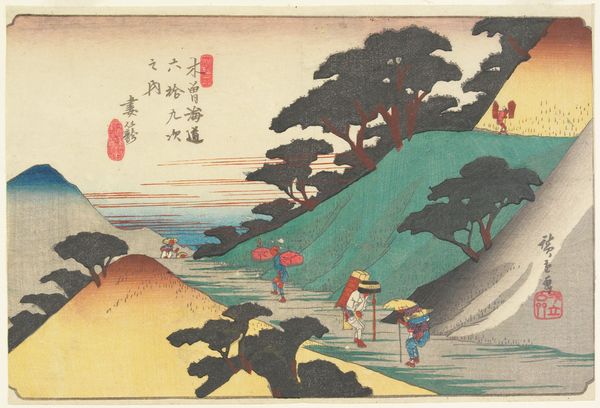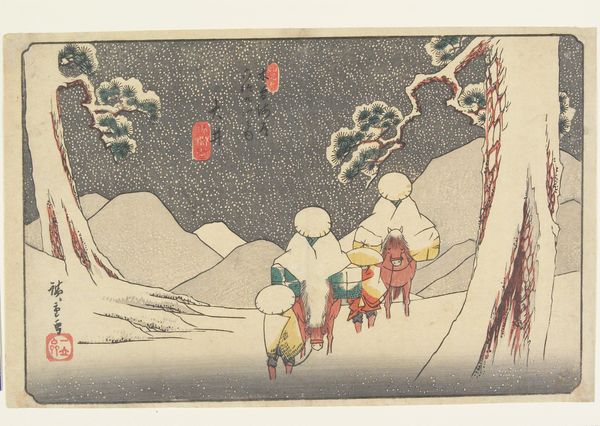
print, photography, ink, woodblock-print
# print
#
asian-art
#
landscape
#
ukiyo-e
#
japan
#
photography
#
ink
#
woodblock-print
Dimensions: 8 7/8 × 13 15/16 in. (22.6 × 35.4 cm) (image, horizontal ōban)
Copyright: Public Domain
Editor: So, here we have Hiroshige’s “Twilight Snow at Uchikawa,” a woodblock print made sometime between 1835 and 1839. I’m immediately drawn to the stark contrast between the bright blue water and the muted, snowy landscape. What symbolic significance might you find in that juxtaposition? Curator: Notice how the deep blue almost seems to carve into the winter scene. Water, in many cultures, is a potent symbol of both life and purification, yet here it coexists with a landscape in hibernation. I'm interested in the umbrellas in the lower left quadrant; what do they evoke for you? Editor: The figures with their umbrellas appear small, almost vulnerable, in this vast, snowy world. I guess they show daily life continuing despite the weather. Is there something more to it? Curator: Perhaps consider the umbrella itself. It provides protection, yes, but it also signifies status, a barrier between the individual and the elements – a little portable world. How does this symbol contrast with the reality of people trudging wearily in a snow-bound landscape? Their shared struggle? Are they pilgrims? Editor: I hadn't considered the umbrella beyond its practical purpose. Looking again, I notice how the repeated shape almost echoes the snow-covered roofs. Is that mirroring intentional? Curator: Hiroshige was a master of composition. That mirroring could suggest a harmonious, even divinely ordained, connection between humanity and nature, yet a delicate, vulnerable existence. It makes you consider: where is that balance? And could these figures even stand as cultural heroes by today's standards of surviving hardship? Editor: Thinking about it, I see that delicate balance much more clearly now. The composition seems to hold the quiet strength needed to simply keep going through the harshness. Curator: Indeed. Hiroshige invites us to consider not just the scene before us, but the enduring spirit that allows life, both human and natural, to persist even in the face of adversity. Editor: This makes me appreciate how a seemingly simple landscape can contain layers of symbolic depth and social context!
Comments
No comments
Be the first to comment and join the conversation on the ultimate creative platform.
